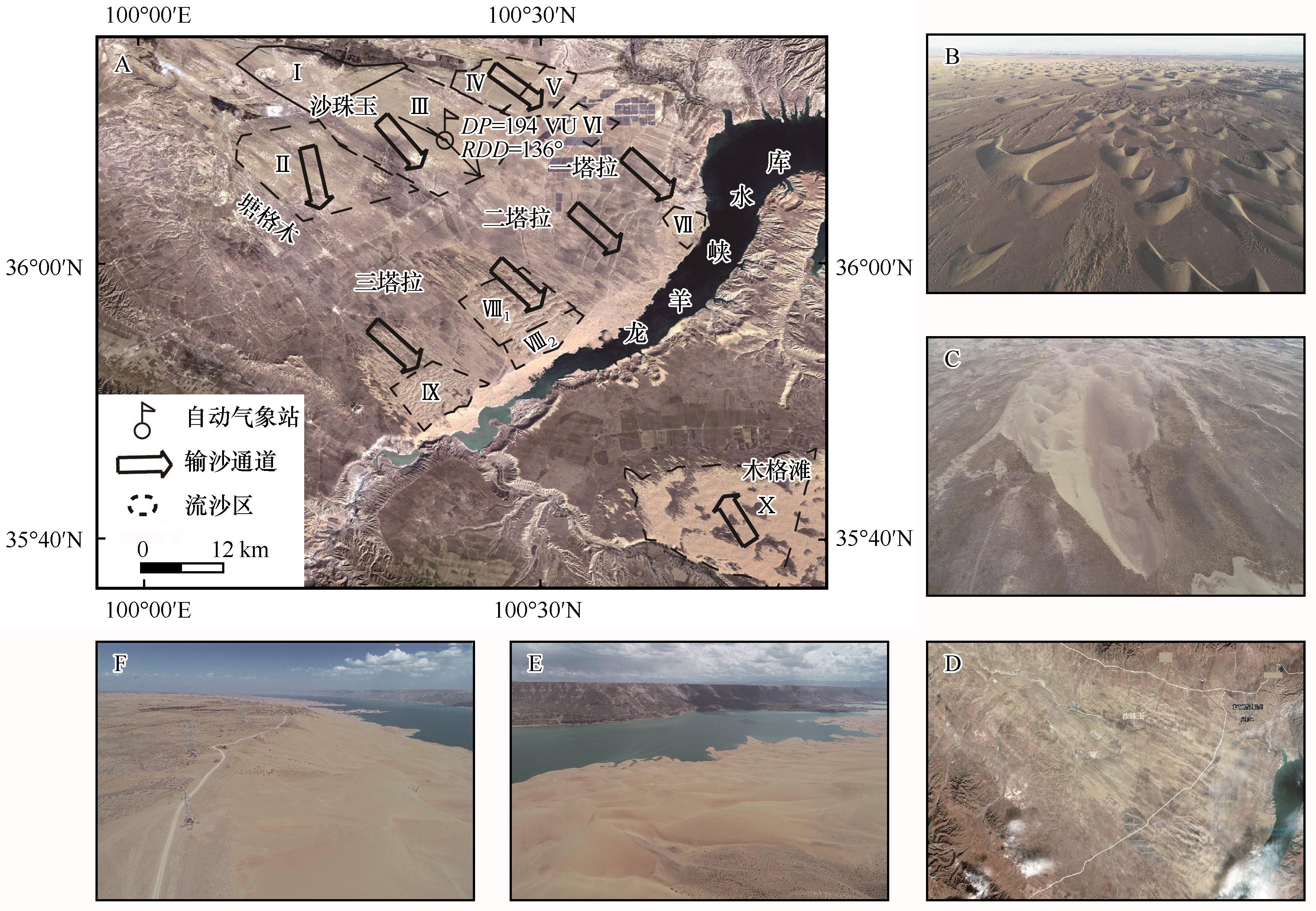图1. 龙羊峡库区周围景观格局及输沙通道分布(A:流沙区输沙通道分布,Ⅰ—Ⅹ代表流沙区;B和C为不同区域的沙源,其中B为二塔拉分布的沙丘,C为三塔拉的巨型风蚀坑;D为卫星监测的沙尘暴(2021年1月10日);E和F为风沙入库现状(2020年8月)。库区东南侧(木格滩)分布有连片的沙丘,沙丘发育更成熟,而库区西北侧(塔拉滩)沙丘呈现不连续分布,发育程度轻,沙丘高度低)
Fig.1. Landscape and sand transport corridors around Longyangxia Reservoir (A: The sand transport corridors of major sand areas, and Ⅰ—Ⅹ represent the different sandy land areas. Figure B and C represent the sand source in different area, figure B shows the dune in ErTala, figure C represents the mega-blowout in SanTala; Figure D represents the sand storm monitored by satellite; Figure E and F are the current situation of sand transported into the reservoir. In the southeast side of the reservoir area (Mugetan sandy-land), continuous dunes are distributed, which are more mature, while in the northwest side of the reservoir area (Talatan sandy-land), dunes are scattered, lightly developed and with low dune height)

